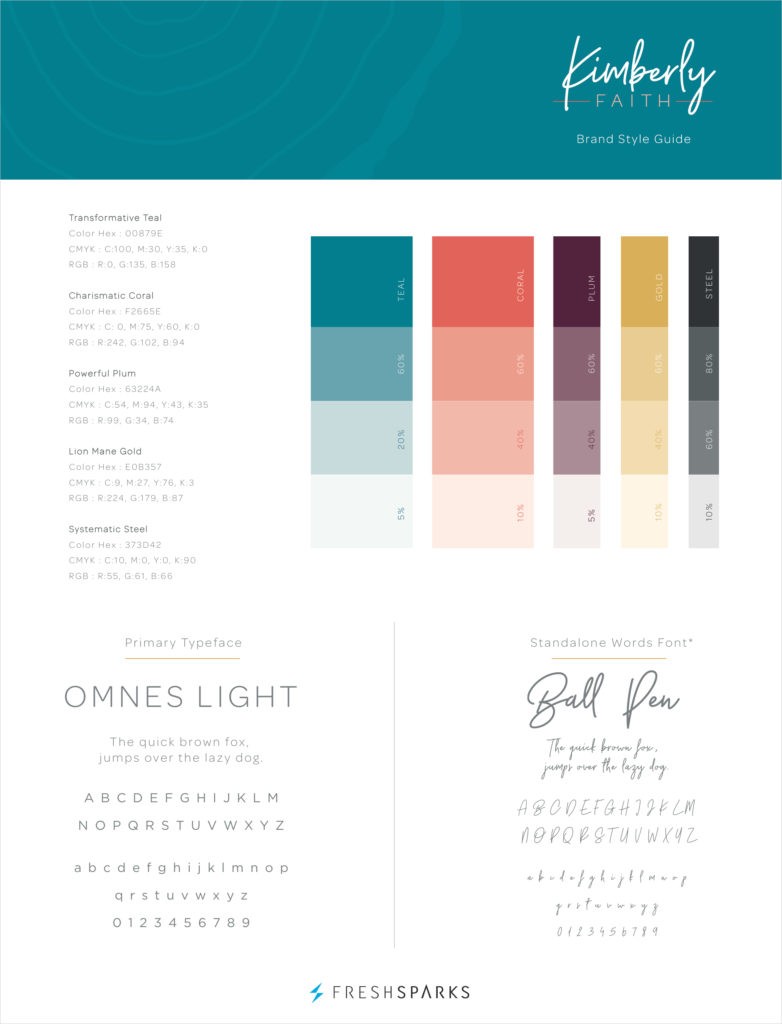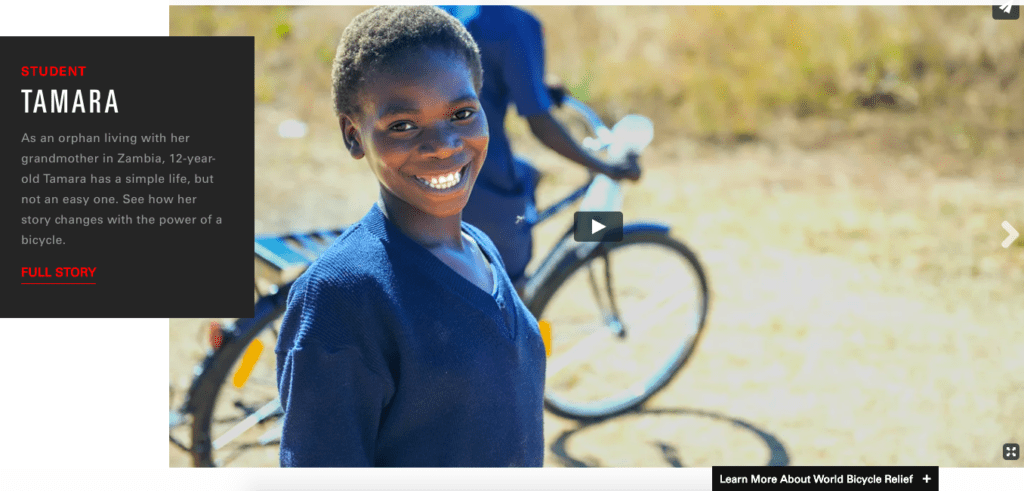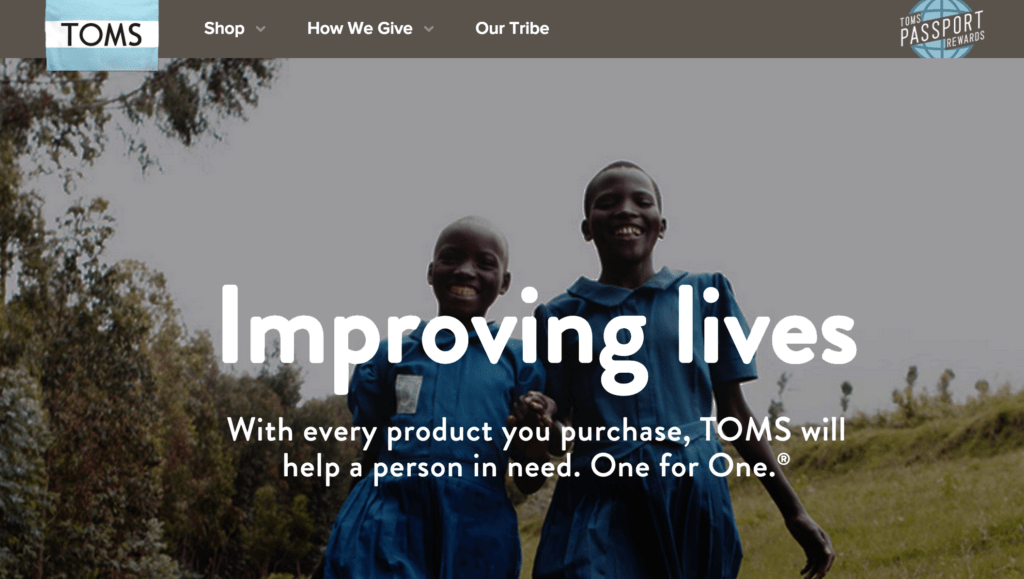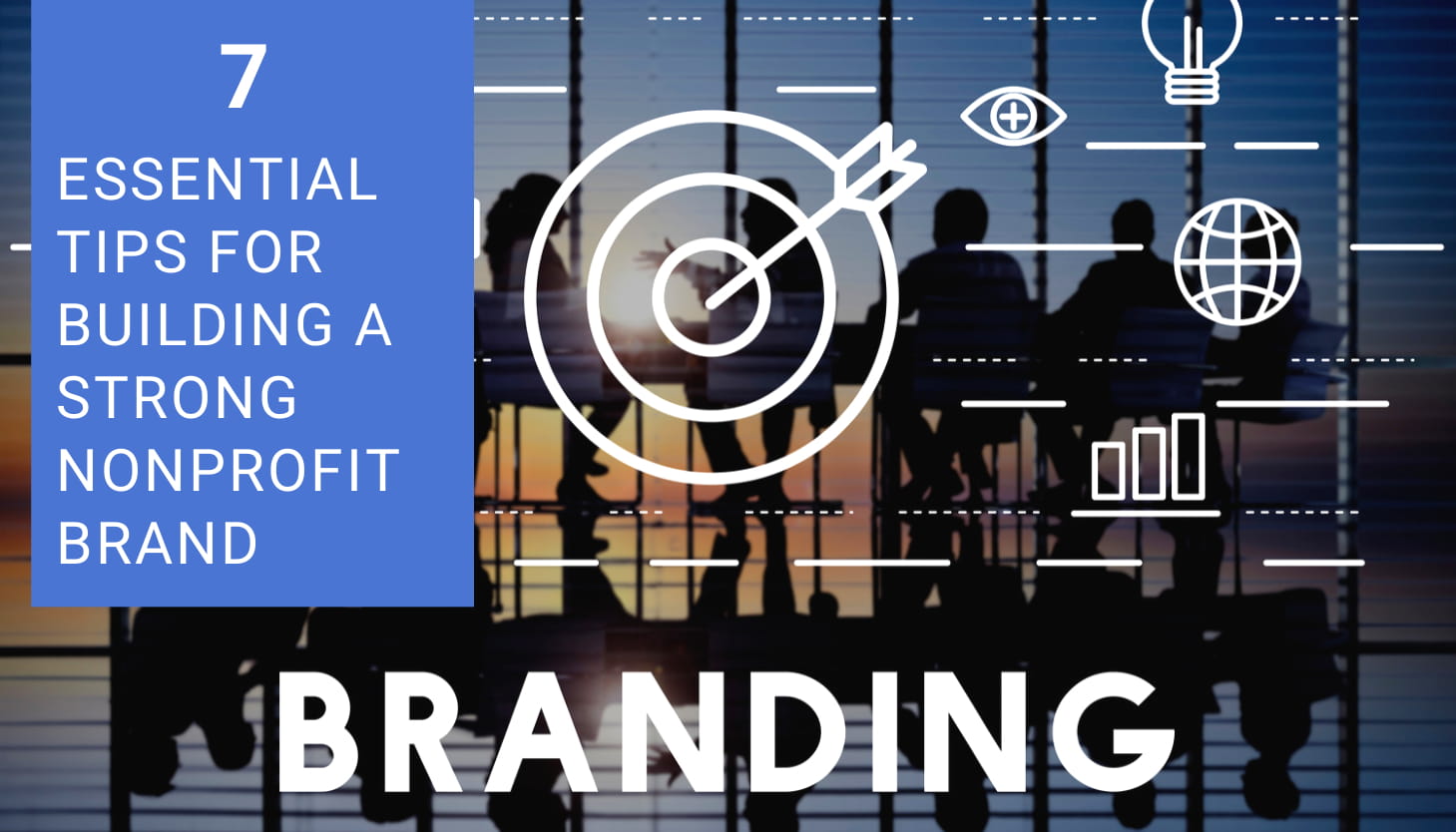Branding might not be the first thing you think of when you think of nonprofits, social businesses, or any other organizations that focus on delivering social impact.
The word ‘branding’ can sound like something that’s strictly reserved for large for-profit enterprises. However, branding is as important for nonprofit organizations as it is for businesses.
Nonprofit branding helps to stand out from other nonprofit organizations and creates relationships with your audience to cultivate loyalty and trust. A strong nonprofit brand can help you raise more money, increase social awareness and build a solid reputation over a period of time.

So, Why is Nonprofit Branding Important?
1. Standing Out
Good nonprofit branding helps you stand out amongst other similar nonprofit organizations and get your message across in a noisy space.
Many nonprofit organizations nowadays face the struggle of differentiating themselves from other comparable organizations working on similar causes. Branding can help your organization become memorable. To do that, you need a solid branding package to ensure that your brand is consistent and unique.
Branding package elements can include your organization’s logo, tagline, colors, fonts, website design, and more. When all of these elements are cohesive and consistent, it will help people remember your nonprofit and brand more easily.
2. Increased Trust and Loyalty
When a brand has been intentionally crafted, properly positioned, and aligned to its target audiences, the trust, and loyalty of the audience increase. A strong nonprofit brand doesn’t only increase the trust and loyalty amongst supporters but also creates a sense of organizational units within the organization (amongst staff, volunteers, and other stakeholders). All of these contribute to the growth of the organization.
3. Fundraising and Increased Engagement
In the nonprofit sector, the competition for funding is high. A strong nonprofit brand can help you achieve your fundraising goals by increasing visibility and generating support. A strong brand also increases engagement among supporters and donors.
These are only some of the benefits a strong nonprofit brand can bring about. Beyond these, nonprofit branding can drive your long-term strategic goals, increase public trust, increase internal cohesion, increase awareness about your cause and your work, build your reputation, among other things.
With so many nonprofit organizations doing their part to help the world and ensure public support – branding is becoming increasingly important.
What is Branding?
Nonprofit branding is all about how the world sees your organization and the work you do.
Chances are you know what Habitat for Humanity, Red Cross, or UNICEF do. That’s what strong nonprofit branding does. It gets you recognized, and it also strongly influences the way your nonprofit’s messages are received by the public.
A brand is more than its visual identity: the name, the logo, and graphic design.
A brand is a construct held in the minds of those aware of it. And brand management is the work of managing those associations.
And branding isn’t (only) about putting your logo on mugs, t-shirts, and pens. It’s a much wider and more complex process.
In addition to this, the dominant brand paradigm in the nonprofit sector has been all about fundraising, increased visibility, and communications – making ‘branding’ something for the marketing and communications team to focus on.
However, times and perceptions are changing. Nowadays, progressive nonprofits are able to see the potential of branding to transform organizations, galvanize support and brand ambassadors, and help deliver their nonprofit’s mission.
Nonprofit branding – Essential Tips for Building a Strong Nonprofit Brand
1. See the Big Picture and Know Your Audience
Before starting with creating a nonprofit branding guide or hiring a designer to design your website or logo, take a step back.
Take some time, ideally together with your team, to:
– Review your mission and vision statement.
– Reflect on your successes and learnings.
– Brainstorm with your team about what your organization means to each one of you.
– Get in touch with donors, volunteers, Board, and other stakeholders and gather their inputs too.
– Review your goals and any organizational strategy documents you have.
After having done that, also take the time to understand your nonprofit’s target audience.
When building a brand, it’s very important to know who exactly you are trying to reach – so you can tailor your communication to meet their exact needs.
Get very specific – write out the interests, lifestyle, and motivations of your target audience. This exercise will benefit all aspects of the brand-building process.
And it won’t only benefit the brand-building process, but will also likely positively impact other areas of your nonprofit’s work.
For example, if the right person is consuming your content or opting into your email list, chances are that your conversion rates (to donations or volunteer sign-ups, for example) will increase.

2. Create a Nonprofit Branding Guide
When it comes to branding, consistency is key. An organization can only build a strong brand if its voice, visuals, and approach are congruous.
Keep your branding and logo consistent on your website, social media channels (whichever one you use), infographics, newsletters, brochures, flyers, emails, and more. It’s also very important to have a branded donation page if you’re looking to raise funds online.
In addition to keeping your branding and logo consistent across channels, it’s also important to keep your messaging consistent. There’s (almost) no such thing as repeating your mission too many times. This is especially the case if you’re running an awareness or a fundraising campaign. This is what creates easy recognition and fosters loyalty and trust.
Every interaction, online and offline, with your donors, Board, volunteers, partners, and staff is an opportunity to build relationships and strengthen your brand. For that to happen, all of your communication efforts should be cohesive. While personalization and audience segmentation are indeed important, don’t stray too much away from your key messaging.
To help with consistency, create a simple nonprofit branding guide that outlines your main design elements, the typography, the logo, and other elements of the brand. Make sure the guide includes rules for what’s allowed and what isn’t when it comes to using those elements online and offline. For example, you could make it clear that your logo is not to be stretched or used on specific backgrounds or contexts.
Pro tip: Review your current print and digital content. If your branding is not cohesive, make it a plan to make adjustments.

3. Design an Impressive Logo
Although branding is not about the logo, the logo is the centerpiece of your brand. It’s usually the thing that people remember and recognize you by. It’s what creates the association to your brand.
This is why it’s essential to come up with an outstanding logo for your organization – and this is not easy. A great logo will be simple but compelling, moving and relatable, memorable, and communicating who you are – all in one.
Before designing your logo, recall what your nonprofit’s mission and vision are, and perhaps even summarize your goals in a couple of words. This will help you brainstorm colors, symbols, images, or words that best represent your organization.
When designing the logo, don’t make it too overwhelming. Use white/negative space to create a balance of elements. Do your best to make your logo classy and timeless – standing the test of time.
Your logo can also be typographic (think Coca-Cola). If you choose to use typography for your logo, be careful when selecting the font – and remember to stay consistent.
It’s, in many cases, very helpful to have a ‘brand tagline’ added to the visual/representation or symbol. For example, Mind’s logo includes both a clear description of what the charity does in four words and a very compelling and clear visual representation of their work (i.e. tangled lines getting untangled).
Pro tip: Avoid clichés in your field of work (e.g. holding hands, hearts or leaves/trees).

4. Use Storytelling as a Tool
Successful nonprofit branding both convinces the head and touches the heart.
To convince the head, make sure your nonprofit is transparent, clear, and communicative with your supporters and donors. Share frequently about your impact, answer your supporters’ questions, demonstrate how the donations money is spent. Use facts, data, and impact measurement to show your donors and supporters why your organization is doing good work and why you’re different from other nonprofits.
While numbers and facts matter, effective nonprofit branding is all about touching the hearts of your audience. If you’re able to have your audience relate to your cause and get passionate about it, it’s likely that they’ll become loyal supporters, donors, and evangelists.
Storytelling is one of the most powerful ways in which you can build your brand. Storytelling is a valuable tool that can help your audience understand the context in which you operate by unveiling the challenges your beneficiaries (or your nonprofit) are facing. It can help you build meaningful relationships with your audience, creates trust and credibility, and helps your nonprofit stand out – which is all you want when it comes to nonprofit branding.
Here are three quick storytelling tips, but for more storytelling insights head over to our blog and read our post on Nonprofit Storytelling:
– Tell authentic stories about your work. Today’s audience can easily differentiate between a sales pitch and a genuine story.
– Stories come in all shapes and forms. Don’t forget about visual storytelling, particularly the video – which is one of the most effective mediums to relay messages.
– Always have a central character. A central character (the hero) is usually a beneficiary of your organization. It’s much easier for people to relate to individuals than to large groups of people or abstract concepts. Paint a clear and vivid picture of a life of your central character.

5. Don’t Forget the Community Outreach
While utilizing the Internet is one of the most cost-effective ways to reach a lot of people and spread the word about your nonprofit, there’s a lot to say about the in-person interaction.
Resources allowing, investing in physical community outreach activities can really solidify your brand, make it relatable, and make it come ‘alive’ with your supporters, donors, and community.
Nonprofits that are able to visibly show a commitment to the community are more likely to have a stronger reputation and attract supporters and donors who care deeply about what the organization stands for.
According to Harvard Law research, community outreach and corporate social responsibility programs create distinct value that leads to increased customer loyalty, willingness to pay premium prices, and lower reputational risks in crisis situations.
Community outreach also establishes and improves your relevance in the communities where you operate.
Community outreach typically involves using your nonprofit’s resources — be these in the form of money, time, or volunteer hours — to outreach activities.
Regardless of the outreach activities are ‘open doors’ days when your donors and supporters can engage with your staff members or events when the entire community comes together – community outreach is one of the most effective strategies for building a strong nonprofit brand and driving growth of your organization.

6. Personalize Your Organization
By “personalizing”, we don’t mean personalizing salutations in e-mail newsletters or using segmentation (although you definitely want to do both of those things).
Personalization has been the go-to strategy for organizations, nonprofit and for-profit, for years now. The rise of customized or personalized products and services is a clear demonstration of that trend.
Personalization within the nonprofit sector can take many forms.
For example, Christian Children’s Fund lets its donors sponsor a single child identified by name, photo, and other personal details. Potential donors are presented with a photo and biography of a child they can sponsor for a mere 80 cents a day.
Kiva lets donors get to choose to whom they make a microloan.
Personalize your appeal as much as possible: Don’t contribute to the club’s general fund, sponsor a gymnast. Don’t just write a check to the school your child attends, provide an incoming student with the aid she needs to enable her to attend.
Many organizations also use peer-to-peer fundraising in order to personalize and humanize their organizations and make them more relatable, by having their supporters raise money on their behalf.
7. Don’t Be Afraid to Innovate
People remember organizations that are doing something different, something avant-garde. If you truly want your brand to be recognizable, talked about, and in people’s minds – don’t be afraid to innovate.
Make efforts to position yourself as innovative and forward thinking. Becoming a thought leader in the nonprofit sector requires work.
There are many ways in which you can go about positioning your organization as a thought leader. You could:
– Submit thought pieces, editorials, and letters to the editor of a local newspaper;
– Adopt new technologies and strategies;
– Drive conversations on social media platforms;
– Conduct research related to your mission;
– Create great content and disseminate it widely;
– Encourage ideas sharing and conversations within your nonprofit.
Doing something different, setting trends, and starting conversations command the attention of your audience.
It goes without saying that this doesn’t mean that you should do something solely because it’s different.
Ensure that your activities are aligned with your mission and values and make sense within the context of your organizational strategies.

Conclusion
Nonprofit branding, albeit an immensely important undertaking, isn’t usually the first thing a nonprofit will invest resources in. This is because nonprofits exist to accomplish a charitable mission and to serve their beneficiaries.
So, a time-intensive and detailed branding process is usually not the priority, especially compared to something like fundraising (although some basics like the website, the name, and the logo are usually put together upon starting a nonprofit).
On the other hand, a great nonprofit brand everything else to happen. This makes it a difficult balance to strike.
Wherever your organization is at the moment, creating strong nonprofit branding is hard work.
It’s not a simple task to turn an indifferent or lukewarm audience into loyal supporters. Don’t get discouraged on your way to the branding happily ever after.
We hope our article provided you with helpful tips and resources to get started with becoming a branding superstar!
Check out our Nonprofit Blog for more ideas, and don’t forget to try out Donorbox as your online fundraising software.











